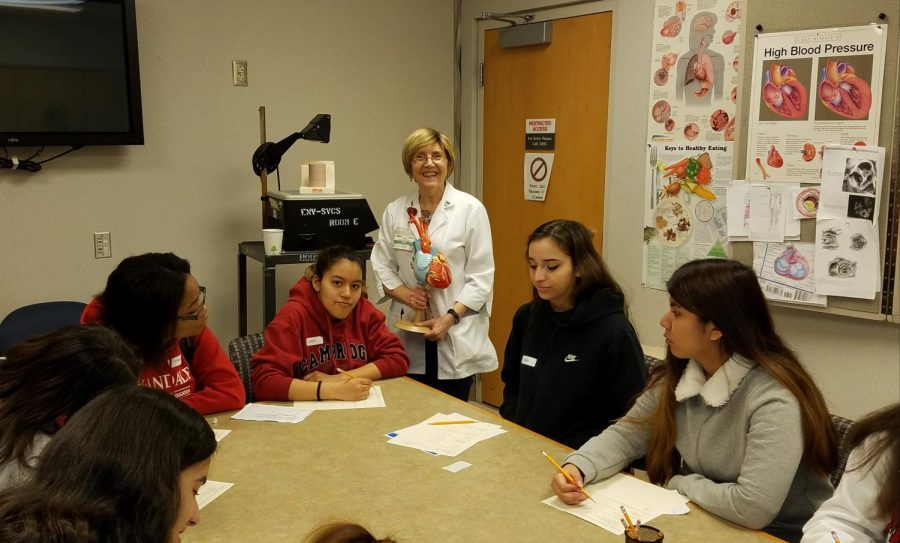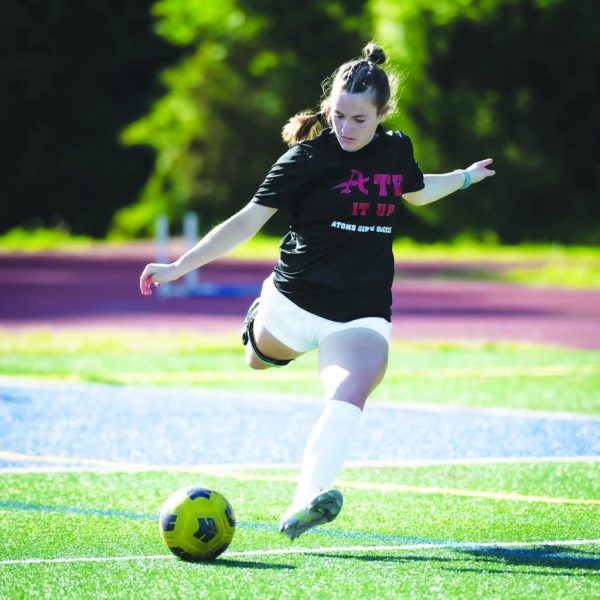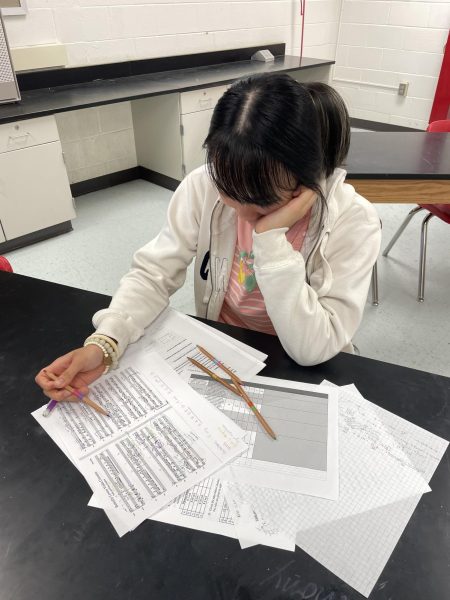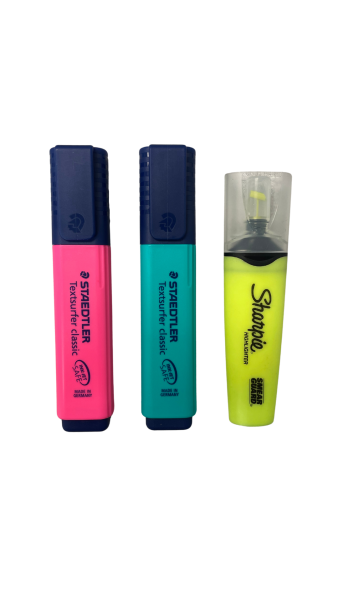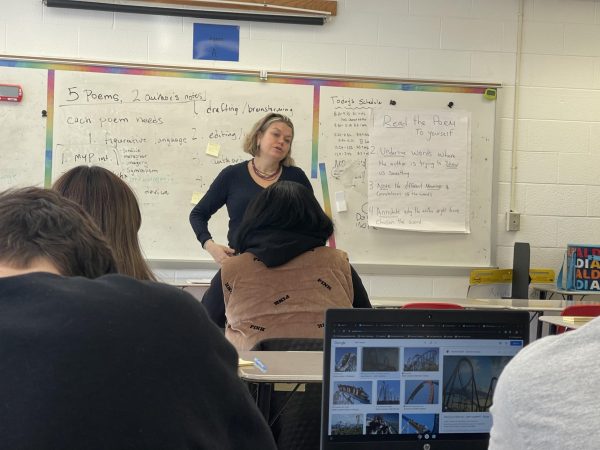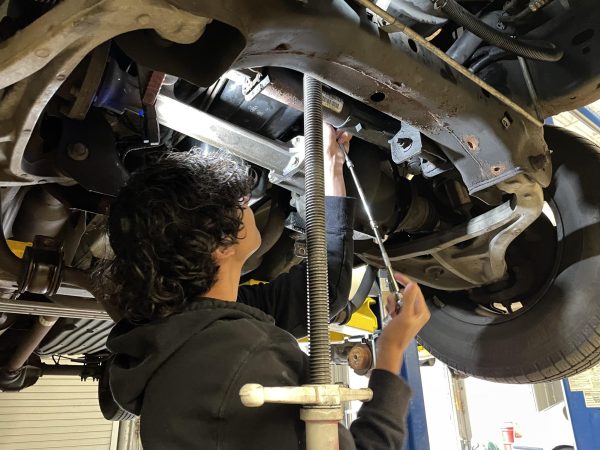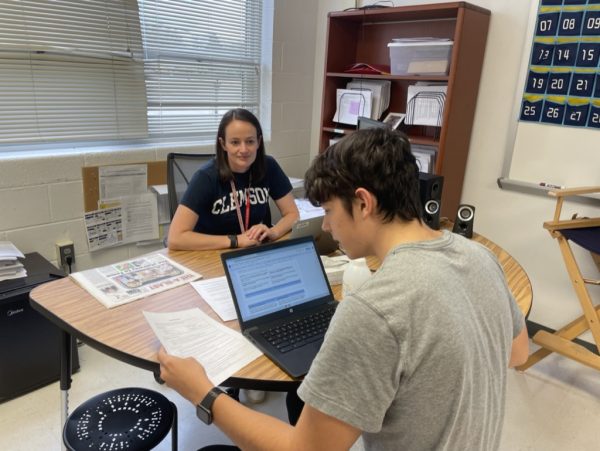Students view heart surgery
Before the Coronary Artery Bypass Surgery, Nurse Darla Ferris starts the session with a prior knowledge test in the INOVA Dome classroom.
Senior Cort Hollis was cranky about having to be at school by 6:45 a.m. but he still had excitement running through his veins. Along with the rest of the Human Anatomy class students taught by Marcia Bellamy, he was a short bus ride away from seeing a cardiovascular surgery at Inova Heart and Vascular Institute.
This is thanks to the Dome Experience program in the Center for Learning and Innovation. Students can see direct views of procedures with the “Dome,” a special viewing platform above the operating room.
“I was expecting the kind of viewing room in Grey’s Anatomy,” senior Jennifer Chavez said. “In reality, the room we were in had rolling chairs and windows that showed the operating room.”
Students were at the edge of their seats during the procedure.
“We saw every detail of a four-hour surgery with every second being entertaining,” Hollis said.
In particular, the class watched a coronary artery bypass surgery, sometimes called CABG (pronounced “cabbage”). The process reroutes blood around clogged arteries to improve blood flow. In order to do this, the surgeon harvests veins from the patient’s leg.
“The patient essentially provides their own spare parts,” Bellamy said.
Viewers learned things that they couldn’t have in a traditional classroom.
“The heart is way smaller in real life than the models we saw in class,” Chavez said.
Hollis benefited in a different way.
“I had already learned most of what was involved in the surgery, but it all made sense and was solidified in my brain after the surgery as a visual learner,” Hollis said.
Seeing what it takes to complete surgery and how many people are involved gave students a fresh perspective.
“It was so interesting because I got to see the different types of people that are in the operation room like the lead surgeon, anesthesiologist and nurse practitioner,” Chavez said.
Hollis was able to make connections between medical television shows and his personal surgical experience.
“There are fewer mishaps, but the humor is 100% there,” Hollis said. “The lead surgeon was wearing cowboy boots during his operations and he also likes to listen to lithium music.”
Hollis said he encourages anybody else to jump at this amazing opportunity of a field trip, but that’s not the only reason he took the Human Anatomy course.
“Although the surgery is for sure a highlight, I am mostly interested in the complexity of how humans work,” Hollis said.
With multiple days reserved for the visits and a maximum of 25 students each day, Bellamy was able to see the same procedure two days in a row as a chaperone.
“I was fascinated by the similarities as well as differences in the work of different doctors,” Bellamy said. Surgeons sometimes have the option to use their preferred techniques instead of sticking to a script.
The Dome Experience, although free, is always in extremely high demand.
“This was a fascinating experience, but it was very difficult to secure a date,” Bellamy said. Luckily, she has already secured a reservation for March 2020 so that next year’s Human Anatomy classes can experience the very same surgical brilliance.
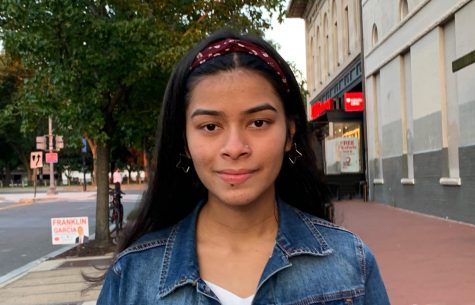
Senior Khadija Ahmed is in her fourth year at The A-Blast. She has previously been a staff writer, Academics Editor and Managing Editor. In her free time,...



